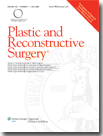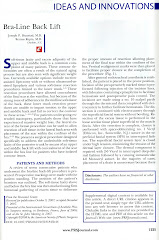Aging is a complex process that is a result of environmental experiences as well as genetics. Its effects are seen in our both, face, mind, and spirit. Although some aging effects are positive--wisdom, patience, experience-- most of the physical signs are undesirable. Among the undesirable effects of aging, laxity is the most easily recognized and often unwanted.
Laxity related to aging can be seen in any area of the body. The face, neck, arms, breasts, abdomen, hips, and thighs are frequent areas of undesirable excess soft tissue laxity related to aging. Soft tissue laxity related to aging occurs secondary to underlying volume loss, loss of elasticity of the skin, and stitching of the underlying ligaments that attach the skin to the underlying muscles and structure. This process is largely genetic but can be significantly impacted by a handful of environmental experiences including but not limited to sun exposure, smoking, poor nutrktion, certain chronic medical conditions, and weight gain/ weight fluctuation. The rate of development of soft tissue laxity as well as the extent of the excess laxity that develops is a complex interaction of genetic and environmental factors listed above. Minimizing development of soft tissue laxity is an important part of aging gracefully. Notice that we have not said "prevention" of laxity, since currently preventing aging is still a futuristic idea.
So how do we go about minimizing development of soft tissue laxity. Well, since we currently cannot control our genetics we must focus all of our attention on the environment. Treating our body well by giving it the proper rest, dehydration, and nutrition is a good start. Avoiding smoking, excessive sun exposure, and the development of certain chronic illnesses is next on the list. Lastly, there are a number of technologies on the market that may help to slow down some of the laxity that would normally develop. These technologies revolve around the idea of imparting energy, usually transcutaneously (through the skin), to help slow down the stretching of the ligaments that attach the skin to the underlying structures and to help build collage which would help in the rate of elasticity loss of the skin. There are many brands of machines that work on this principle. Some work better than others and none offer a magic bullit. Skin care products that are applied to the skin as lotions and claim to have the same affect are many but how well they work if at all is even more in question.
So, we can't completely prevent laxity from developing, then how do we treat it when laxity becomes too much. Treatment of soft tissue laxity should be generally thought of in two categories: non-surgical and surgical. The list of effective non-surgical treatments for soft tissue laxity is short. In my personal opinion, Ulthera is probably the only non surgical soft tissue laxity treatment that has reasonable effectiveness. There are a handful of treatments for the face that result in less facial laxity but these work primarily on the skin to "shrink wrap" it and not on the underlying soft tissue. These include the larger category of deep chemical and laser skin resurfacing procedures.
Full body lift: The body lift is the cornerstone procedure in the rejuvenation process following significant weight loss. It allows complete correction of the abdomen, the hips, the buttocks, as well as the back and sides of the thighs. The body lift procedure also results in lifting and tightening of the mons pubis. The final incision line is near the mons in front and follows the bikini line around the waist running at the natural border of the upper buttocks and lower back. It can be combined with liposuction or with a procedure known as purse-string gluteoplasty that is designed to use your own tissue that would have been removed to add volume to the buttocks.
Brachioplasty: There are a handful of different options designed to improve the appearance of the arms following weight loss. The procedure of choice depends on the amount of skin and soft-tissue laxity present and the amount of improvement desired. The final incision can be in the arm pit or in the middle part of the inner arm surface.
Breast augmentation and lift: Most patients who have experiences significant weight loss require a breast lift to improve the shape and position of their breasts. A breast lift or mastopexy can be combined with an augmentation to restore the breast volume. Breast augmentation can be accomplished by using an implant or by using the excess skin and soft-tissue that would have been removed by the breast lift procedure. During your consultation Dr. Repta can discuss which combination of procedures will best give you the result that you are looking for.
Bra Line Back Lift: Dr. Repta’s Bra Line Back Lift procedure is designed to eliminate the folds and rolls that accumulate in the upper and middle back near the bra line as a result of excess skin and soft-tissue laxity. Liposuction alone will not correct these areas since in addition to some excess fat there is often a significant amount of excess laxity. The final incision line of the Bra Line Back Lift is placed in the horizontal part of the brassiere strap. Recovery is relatively easy and straightforward and patients who have been good candidates for the Bra Line Back Lift procedure have been uniformly ecstatic about their results.
Thigh Lift: In addition to the full body lift which helps improve the laxity of the sides and back of the thighs, there are two specific thigh lift procedures designed to improve the appearance of the thighs. These include the crescent thigh lift and the vertical thigh lift. The crescent thigh lift is designed for patients who have laxity primarily in the upper inner thighs while the vertical thigh lift is designed for patients who have substantially more laxity the entire length of the inner and outer thighs.
Face and Neck Rejuvenation: Many patients who have experienced significant weight loss desire facial rejuvenation to correct the substantial amount of skin and soft-tissue laxity of the face and neck. A variety of facial rejuvenation procedures are available to help you achieve your goal. Although weight loss has been the primary goal, the face often needs a healthy amount of volume to maintain its youthful shape and contour. Fat grafting for volume replenishment of the face is an integral component of facial rejuvenation following significant weigh loss.
All the best,
Phoenix/Scottdale, AZ







